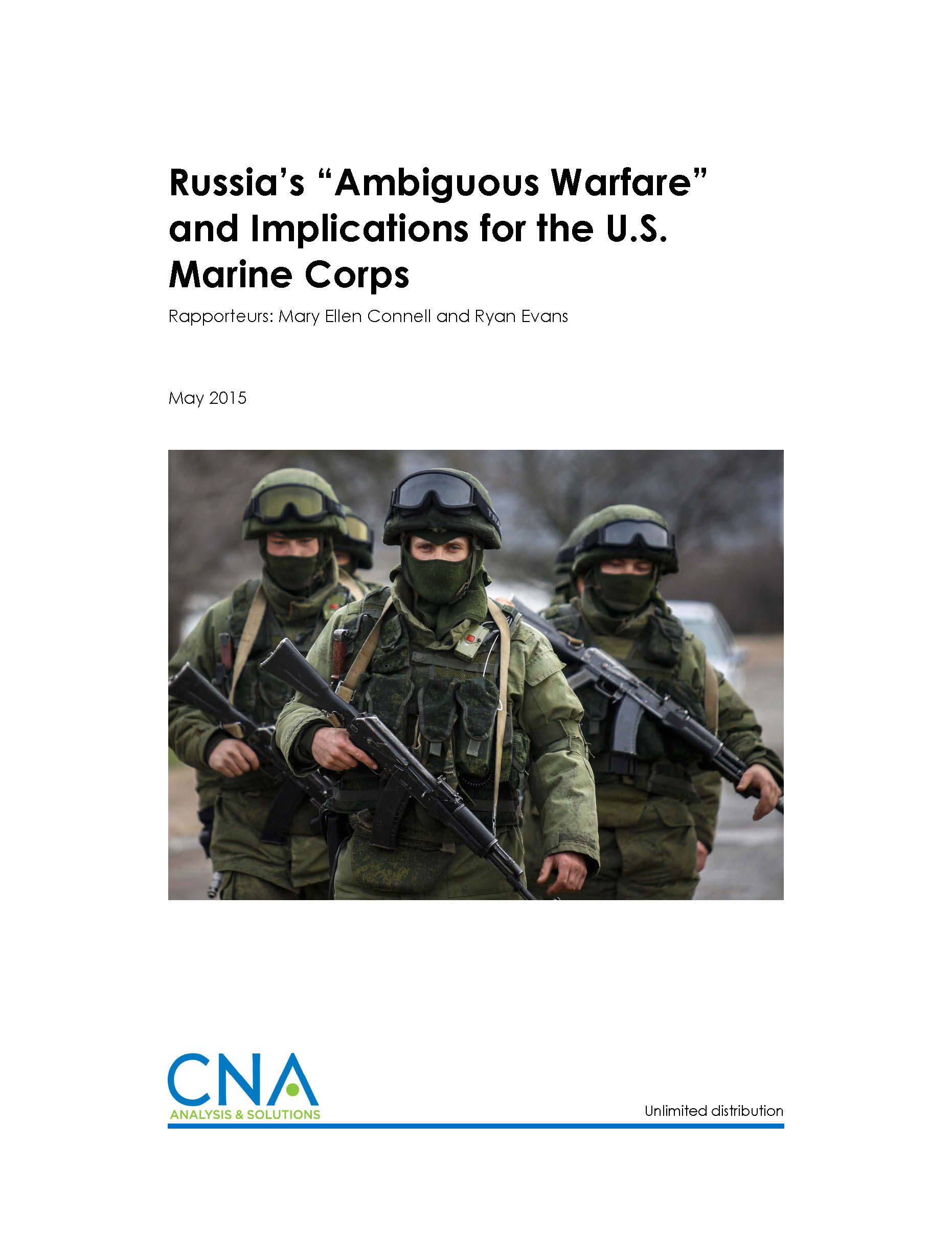It has been just over a year since “little green men”—strongly suspected to be Russian Federation soldiers—surged into Crimea and drove out all elements and symbols of Ukrainian authority. Peace now prevails on the Crimean peninsula under Russian control, but as of this writing, war still rages in Ukraine’s eastern region of Donbass, where Russian-backed separatists wielding Russian weapons, driving Russian tanks, and reportedly fighting alongside unacknowledged Russian troops wage war against the Ukrainian military.
In annexing the Crimean peninsula and supporting instability in Ukraine’s eastern provinces, the Russian Federation and its armed forces have used so-called “ambiguous warfare” to great tactical and operational effect. This brand of warfare involves rapidly generating highly trained and disciplined forces who enter the battle space out of uniform and, in coordination with local supporters, utilize psychological operations, intimidation, and bribery to undermine resistance.
While it is unlikely that U.S. Marines will directly confront Russian Federation forces in the near future, other nations and non-state actors who are potential U.S. adversaries (and who Marines may face on the battlefield) are closely observing Russia’s use of ambiguous warfare and will likely modify their own strategy and tactics as a result. Therefore, it behooves the U.S. Marine Corps to understand the lessons from Crimea and Ukraine and how other adversaries might militarily adapt as a result of Russia’s success.
Drawing out the lessons from Crimea and Ukraine involves seeking the answers to a host of questions, including:
- What is “ambiguous warfare”? What was the Russians’ military strategy, and what tactics did they use in their invasion of Crimea and Ukraine? What aspects of their military strategy and tactics were particularly effective and why?
- What aspects of Russia’s actions in Crimea and Ukraine are specific to this particular set of events, and what are generalizable to other situations?
- What are the implications for the U.S. Marine Corps of Russia’s “new generation” of ambiguous warfare in which influence operations are at the center of operational planning and operations?
To help answer these questions, and to deliberately raise a host of additional questions that the Marine Corps should think about going forward, CNA convened a one-day meeting of U.S. and international experts on February 25, 2015, to discuss the implications for the U.S. Marine Corps of Russia’s ambiguous warfare. This paper presents a summary of that discussion, which was held under the Chatham House rule of non-attribution to encourage a candid exchange of views.
Download reportUnlimited distibution.
Details
- Pages: 28
- Document Number: dop-2015-u-010447-final
- Publication Date: 5/1/2015
